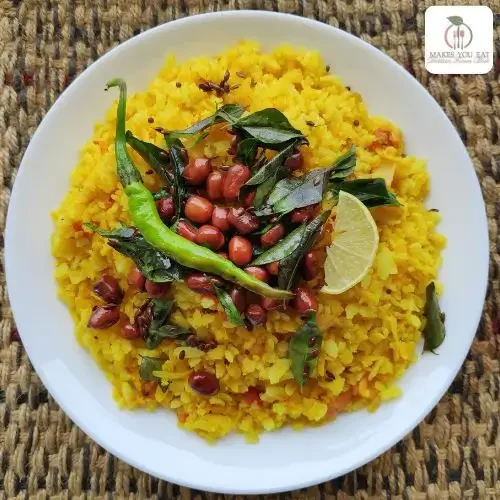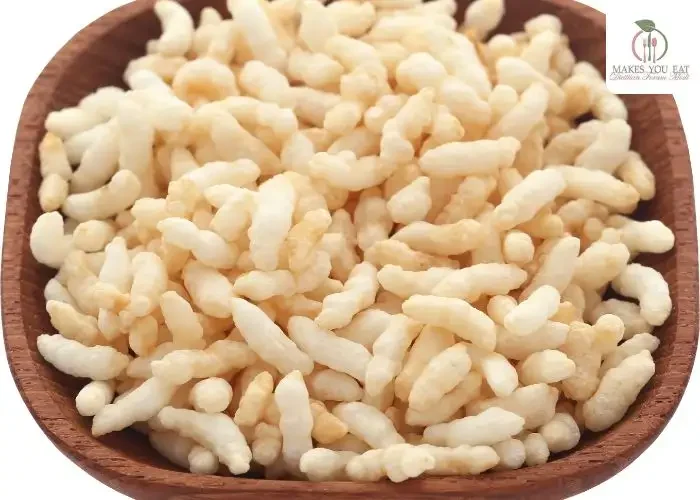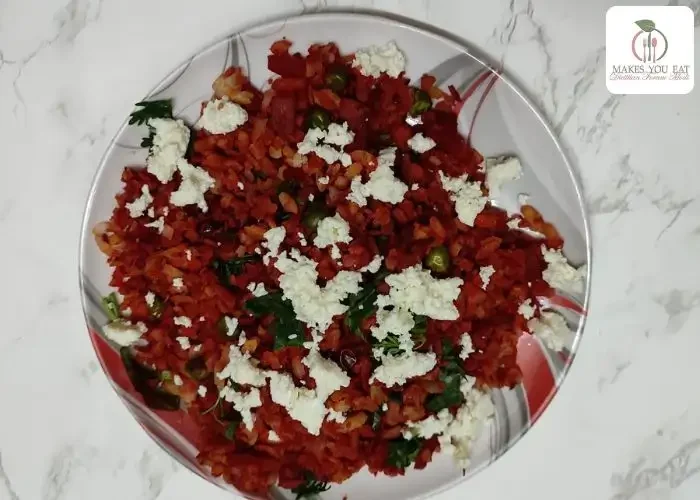
Poha is a all season favourite Indian dish that is cooked in all homes in India. Poha is prepared from flattened rice flakes.
Poha is a go-to item for morning or evening snacks in almost all the houses in India. Poha is light item and after preparation it becomes soft. If you serve Poha in warm state, ahh, nothing like that.
As per the Diabetes study about India by WHO, 50% people are unaware that they are diabetic or prediabetic. And hence the question arises, whether Poha good for diabetes or not? Does Poha increase blood sugar level? Or if you are not diabetic, will Poha make you diabetic?
In this blog post on Is Poha good for diabetes, we will answer all these questions from perspective of best dietitian in Mumbai – Dt. Foram Modi. So, lets get started –
TLDR, Poha is good for diabetes if served in right proportion and is cooked with right ingredients.
Nutritional Value of Poha / Ingredients of Poha
Poha is also known as flattened rice. It is easy-to-digest item prepared usually as a Indian breakfast and snack option. If you are suffering with Type 1 or Type 2 Diabetes, then Poha can be a beneficial food item when prepared with right ingredients.
Naturally, Poha contains many essential nutrients. This includes iron, B-vitamins, magnesium. Poha also contains complex carbohydrates which release energy slowly. Due to this, it helps prevent sudden spikes in blood sugar levels which is an important thing for people with diabetes.
Poha has Fiber content as well. Hence, when you combine Poha with vegetables and sprouts, it will supports better blood sugar regulation, improves digestion. And most importantly, it makes you feel fuller and satisfied.

In the below table, we mention various nutrients and their proportion in 100gm of Poha or 1 plate of Poha.
| Nutrients in Poha | Amount (per 100gm of Poha) |
|---|---|
| Calories | 110 – 130 kcal |
| Carbohydrates | 23 – 27 g |
| Fiber | 1 – 2 g |
| Protein | 2 – 3 g |
| Fat | 0.5 – 1 g |
| Iron | 2.6 – 3 mg |
| Magnesium | 20 – 25 mg |
| Potassium | 150 – 160 mg |
| Sodium | 5 – 10 mg |
| Vitamin B1 (Thiamine) | 0.03 |
Disclaimer: Above values varies as per the percentage of oil, vegetables, peanuts that you mix in Poha during preparation.
Roasted, Red & Millet Poha good for Diabetes ?
Roasted rice flakes or roasted Poha have a lower percentage of fats. This is because they require little to no oil for preparation. Red Poha or Red Rice flakes are rich in Antioxidants and Fiber.
It helps in control blood sugar levels and improve also the heart health. Millet poha is prepared from from flattened millets like Ragi which are in itself high protein millets.
These items has low glycemic index and higher protein content. Due to this, they are an excellent option for better sugar control.
In the below table, we mention various nutrients available in 100gm of Poha. As you can see, Millet poha has highest amount of Nutrients that are helpful for diabetics. So, this really concludes Millet poha is good for Diabetes. Period.
| Type of Poha | Protein in Poha (g) | Magnesium in Poha (mg) | Fiber in Poha (g) |
|---|---|---|---|
| Roasted Poha | 2.5 | 6 | 0.9 |
| Red Rice Flakes | 3.5 | 16 | 2.2 |
| Millet Poha | 4.0 | 45 | 3.5 |
Glycemic Index of Poha - Factor to Make Poha Good for Diabetes

The glycemic index (GI) of Poha is a very important factor to consider for people with Diabetes. If you are looking for one clear answer about why Poha good is for Diabetes, then answer is to check the Glycemic index of Poha. Here’s why.
The Glycemic Index or GI measures how quickly a carbohydrate-containing food raises the blood sugar levels in any individual (not just the diabetic patients). If any food has high GI, then it can cause a rapid spike in blood sugar levels.
And a food in low glycemic index number, it causes a slower, more controlled increase in sugar levels. Poha is made from rice flakes and generally has medium to high GI. So, this means Poha can affect blood sugar levels quickly to rise.
However, if you add ingredients like vegetables or nuts, then you reduce the overall glycemic index of prepared Poha which will have a balanced impact on blood sugar levels.
If you are a diabetic patient, it is important to control your portion sizes and include fiber-rich ingredients to reduce the glycemic impact of Poha.
So, what's the Glycemic Index of Poha?
The glycemic index (GI) of Poha varies as per the type of Poha and how is your preparation method of Poha. Your regular white rice is used to prepare the Poha. Regular white rice has a GI of around 70-80 per 100 grams.
Hence, regular white rice is a high GI food. On the other hand, brown Poha prepared from brown rice flakes has a slighly lower GI and it is around 50-55. So, brown Poha is a better option for people with Diabetes.
The third option, Red Poha which is made from red rice flakes, also has a moderate GI. The glycemic index of Red Poha is in range of 55-60, which is lower than regular white Poha.
As we told, the preparation method and the ingredients also contributes to glycemic index of Poha. Below table summarize how various ingredients contributes to improving the nutritional value of Poha.
| Ingredient to Add in Poha | How It Helps Lower GI of Poha |
|---|---|
| Vegetables (e.g., carrots, peas, spinach) | Adds fiber and nutrients, slows down glucose absorption. |
| Lemon juice | Adds vitamin C and may help reduce the glycemic response. |
| Curd (Plain Yogurt) | Adds protein and probiotics, slows digestion and reduces GI impact. |
| Roasted peanuts or seeds | Healthy fats and protein help stabilize blood sugar levels. |
| Sprouts (moong, chana) | Rich in fiber and protein, further reduce GI and improve satiety. |
| Coconut (grated) | Adds healthy fats and fiber, slowing the release of sugar into the bloodstream. |
| Tempered spices (mustard, curry leaves) | Boosts digestion and flavor without affecting GI significantly. |
Is Brown Poha good for diabetes ?

Brown Poha is prepared from brown rice. As per the research on blood glucose lowering effects of brown rice, the brown rice is more health beneficial for diabetics and hyperglycemic individuals as total sugar released into the blood is around 23% lower as compared to mill rice (white rice).
And this is the reason, that diabetics can consume brown rice flakes or brown poha as its more beneficial than white poha.
However, it is important to consume in moderate quantity. Brown rice flakes have a lower glycemic index compared to regular white Poha. The glycemic index of brown rice flake is around 55 which is considered low. Due to low GI, it is one of the best choice for snacks or breakfast for people with Diabetes.
The fiber content in brown rice flakes helps slow down the absorption of sugar into the bloodstream and thus it helps prevent sharp spikes in blood sugar levels. Additionally, brown rice Poha is rich in essential nutrients like magnesium, iron, and protein, which support overall health.
In below table about nutritional value of brown poha, we mentioned which nutritious ingredients are there in each 100gm of Poha or 1 plate of Poha. Check it out.
| Nutrient | In 100g of Brown Rice Flakes or Brown Poha |
|---|---|
| Calories | 350 kcal |
| Carbohydrates | 72g |
| Protein | 6.5g |
| Fiber | 5g |
| Fat | 1.5g |
| Magnesium | 60mg |
| Iron | 1.2mg |
| Glycemic Index | 55 (moderate) |
Can Diabetics Consume Puffed Rice Flakes Or Murmura ?

Puffed rice flakes are also known as “Murmura” in India. They are a light and crunchy snack made by puffing rice. They are commonly used in a variety of Indian dishes. This includes bhel puri, poha, and murmura chivda.
Puffed rice flakes are low in calories and fat and hence they are an excellent option for weight management (but not diabetics).
However, they are high in carbohydrates and low in fiber. Before a diabetic patient consume puffed rice flakes, it’s important to combine other nutrient-dense ingredients like vegetables, nuts, and seeds for a balanced meal.
Also, it is essential to consume puffed rice flakes in moderate quantity, as they have a higher glycemic index. The glycemic index of puffed rice flakes or Murmura is higher than normal rice flakes and is typically between 70-80.
So, Murmura or puffed rice is not a great option for diabetics. However, they can still consume it in moderate quantity and with added ingredients such as vegetables and peanuts.
15 Different Types of Poha Good for Diabetes

Our head dietitian in Mumbai, Dt. Foram Modi has shared a fantastic Instagram reel of 15 different types of poha.
These are healthy poha recipes to make your poha more nutritious. Check out the below reel now. Also, you can check more such reels on official Instagram account of Makes You Eat, Mumbai. Follow us there.
FAQs on Poha & Diabetes
Is Poha good for weight loss?
Yes, Poha is a great choice for weight loss when prepared with minimal oil and loaded with vegetables. It is light, low in calories, and provides satiety due to its fiber content. Adding peanuts or sprouts increases protein, making it more balanced and suitable for weight management. Dt. Foram Modi recommends vegetable or sprouts poha as a wholesome weight loss diet meal option.
Is Poha good for diabetics?
Poha can be a part of a diabetic-friendly diet if consumed mindfully. Though made from rice flakes, it has a moderate glycemic index and does not spike sugar levels drastically when paired with protein (like tofu, paneer) and fiber-rich vegetables. Dt. Foram Modi suggests using red or brown poha for better blood sugar control.
How many calories in one plate of Poha?
One plate (approximately 150-180 grams) of plain vegetable poha contains around 200–250 calories. The exact count varies based on ingredients like oil, peanuts, or potatoes.
Does Poha increase sugar level?
Plain poha can increase blood sugar levels moderately, especially if eaten in large quantities or made with white rice flakes. To reduce this effect, Dt. Foram Modi advises adding protein, fiber, and choosing low-GI variants like red or brown poha.
Does Poha cause constipation?
No, poha generally does not cause constipation. In fact, when cooked with vegetables and consumed with adequate hydration, it aids digestion. Its light texture and easy digestibility make it a suitable breakfast or evening snack for most people.
Is Poha easy to digest?
Yes, poha is extremely easy to digest due to its light texture and quick-cooking nature. It’s especially recommended by Dt. Foram Modi for people recovering from illness or those with sensitive stomachs.
Is Poha good for uric acid?
Poha is usually safe for people with uric acid issues, but moderation is key. Avoid adding high-purine ingredients like excess legumes or meats. Always consult a dietitian like Dt. Foram Modi for personalized guidance.
Does Poha contain protein?
Plain poha is low in protein, but this can be improved by adding peanuts, sprouts, tofu, paneer, or chole. Dt. Foram Modi frequently includes high-protein poha combinations in her online diet plans for vegetarians and vegans.
Conclusion - Is Poha Good for Diabetes ?
Poha is a lightweight Indian dish which is easy-to-digest. Poha can support both diabetes diet and weight-loss diets. But you need to consume it in right quantity and mix up with right top up ingredients.
If you choose brown poha, red poha, and add sprouts, paneer, or veggies, you can prepare a advanced form of Poha which is good for diabetes.
As Dt. Foram Modi mentions, the key lies in preparation. Hope you found this blog post helpful.
Dt. Foram Modi - Best Dietician in Mumbai
Dt. Foram Modi is the founder of Makes You Eat, one of the best dietician clinic in Mumbai. It is located in Borivali Mumbai. Dietician Foram Modi has 12+ years of experience as a clinical dietician in Mumbai. She has done a specialization in Nutrition & Diet Planning. In addition, she is a certified nutritionist in Mumbai for child care nutrition. She is a certified She is highly regarded as –
Dietician Foram Modi believes in educating her clients through nutrient-rich, non-restrictive diet consultation plans based on Indian homemade food. Her motto: “We Make You Eat – Not Starve!”
If you are looking for online dietician consultation anywhere in India or globe, she is available just a call away. You can contact her through phone call, WhatsApp or directly visiting her dietician clinic in Borivali, Mumbai.
She is a five star rated dietician in Mumbai on Google. Patient’s express a sense of achievement & success in their dietician reviews in Mumbai about Foram Modi. All these factors contributes to make her a best dietician in Mumbai India.



